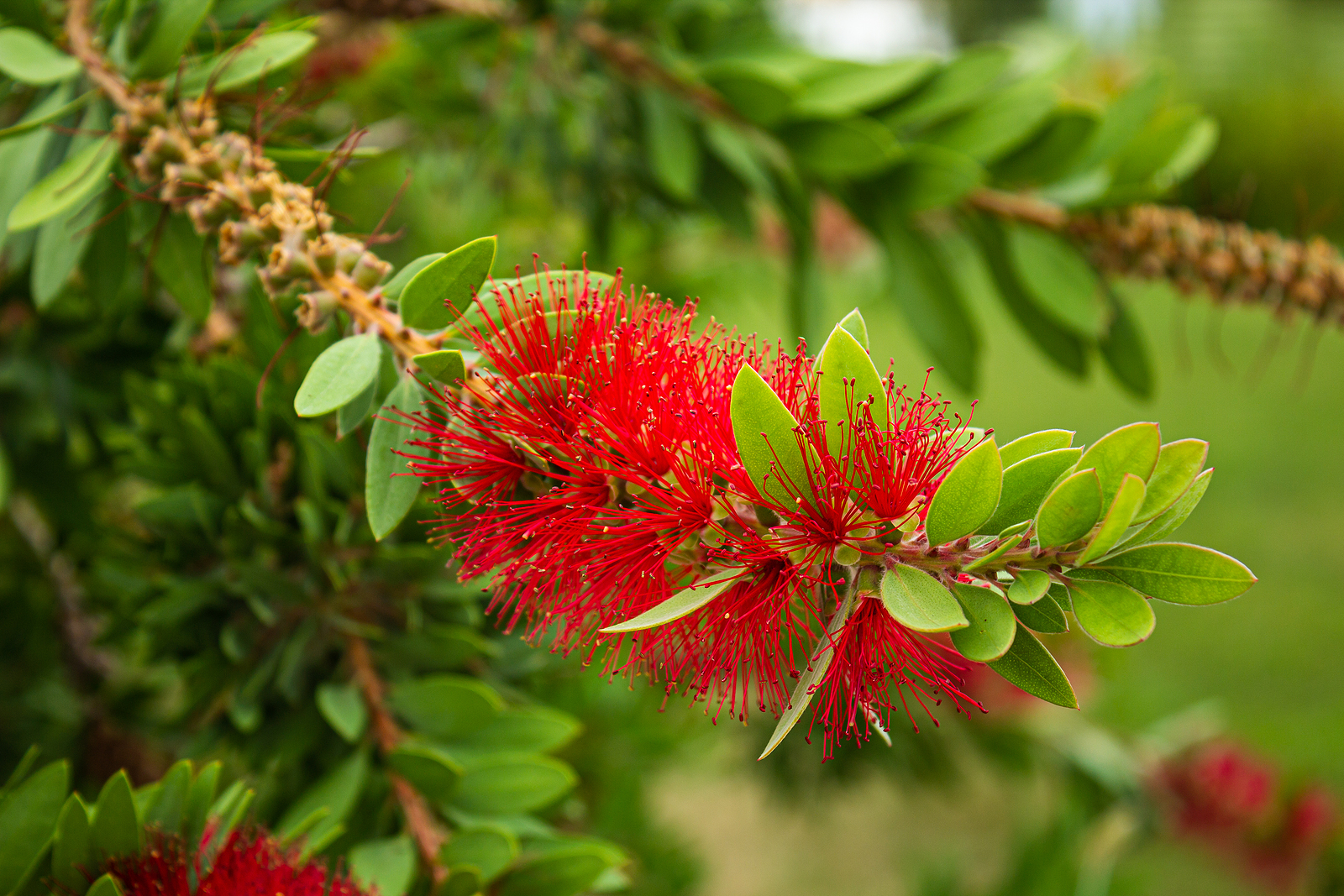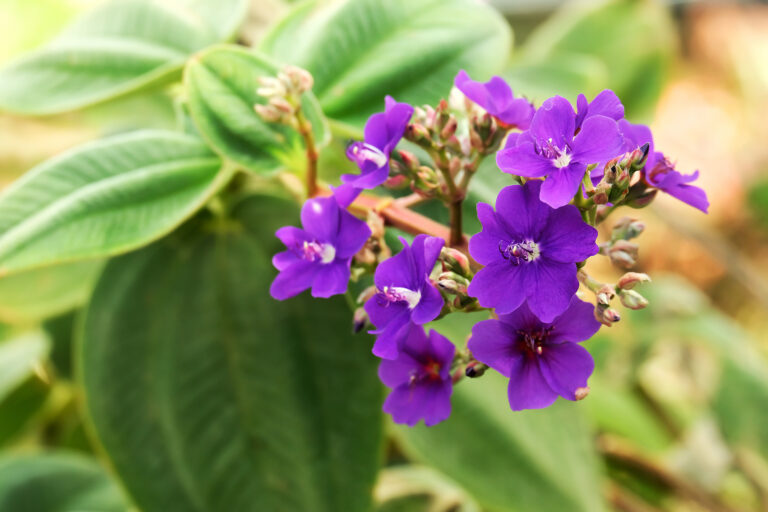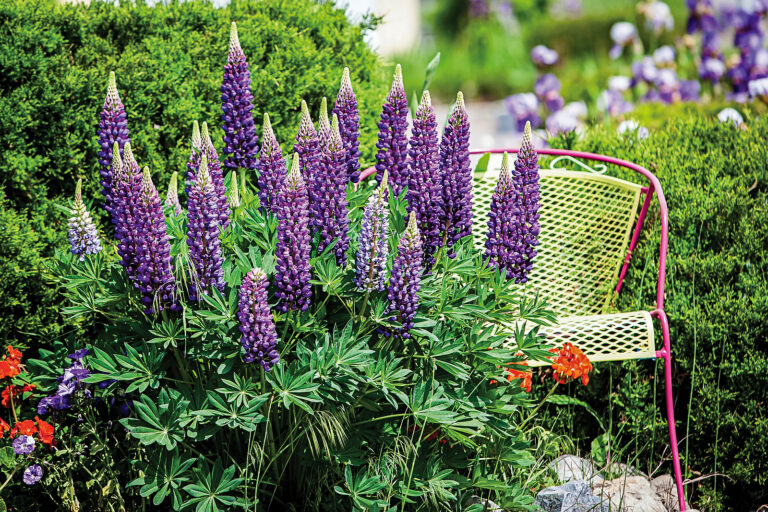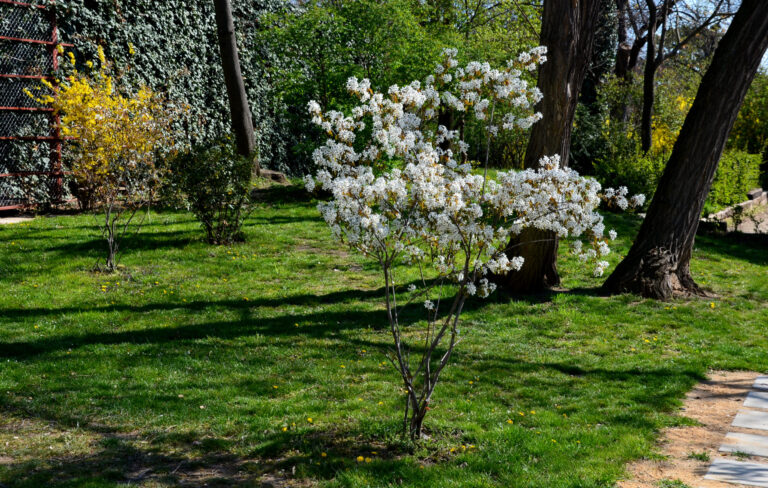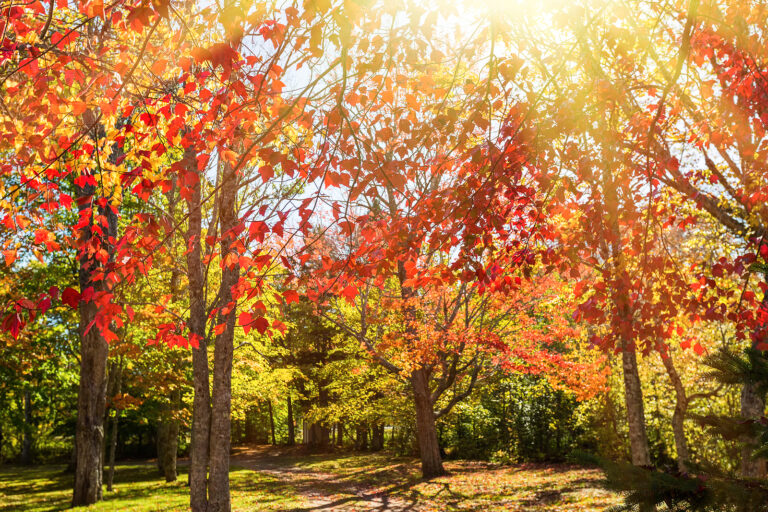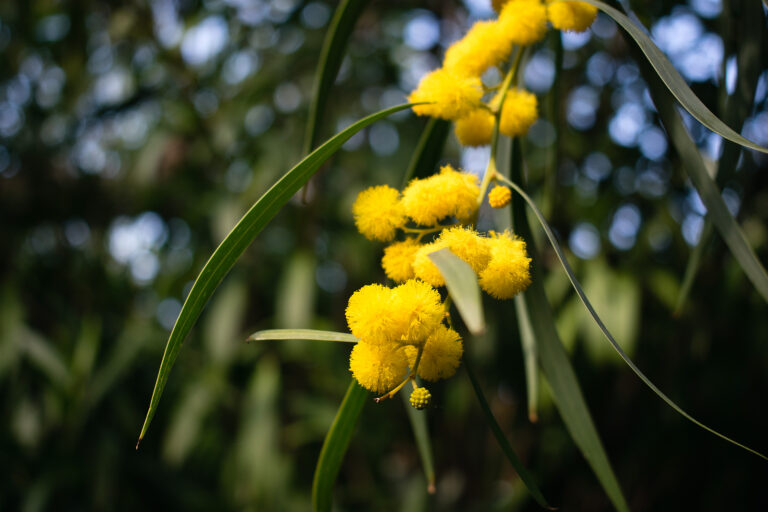How to Grow Callistemon – Bottlebrush
Callistemon–commonly called bottlebrush–is an evergreen shrub commonly grown for its colorful, bottlebrush-like flower spikes which are usually red but can be purple, pink, white, green, or yellow.
Callistemon are subtropical plants; they don’t tolerate cold. They are fast-growing.
Callistemon can be grown in a shrub border or as foundation plants. They can be planted against walls or grown as specimens. Callistemon will tolerate alkaline soil and salt.
Callistemon is a genus of 25 species of evergreen shrubs and trees native to Australia.
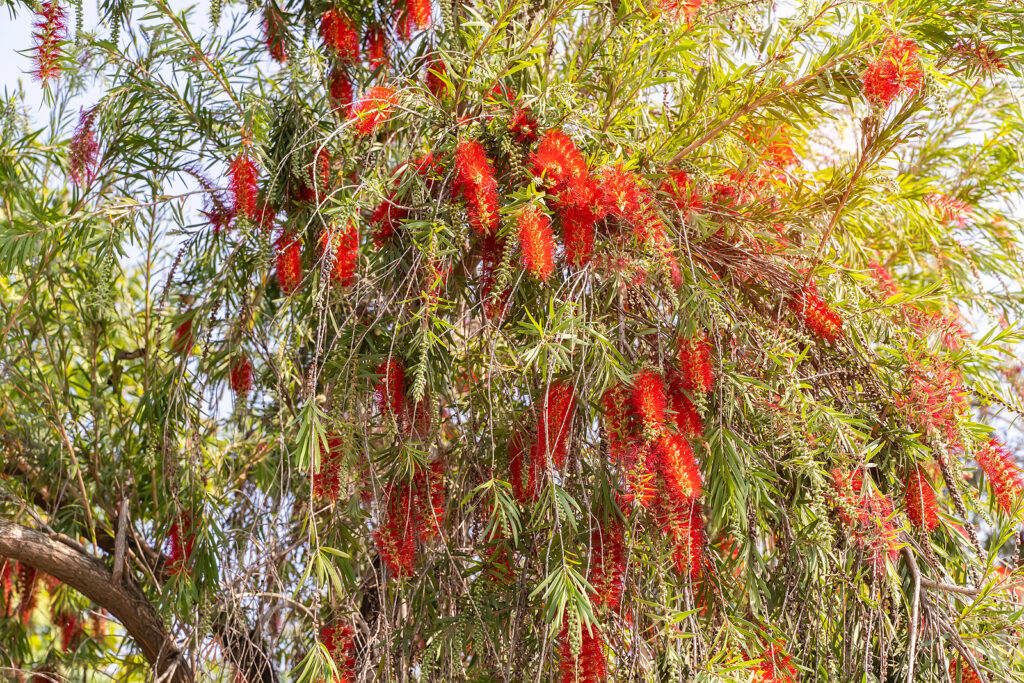
Get to know Callistemon
- Plant type: Evergreen shrubs or trees
- Growing zones and range: Zones 9-12
- Hardiness: Callistemon can be severely damaged at 20°F (-7°C).
- Height and width: Commonly grow 5 to 6 feet (2m) tall and 5 to 20 feet (1.5-6m) wide, some larger.
- Foliage: Simple, alternate, leathery leaves are cylindrical to broadly lances-shaped.
- Flowers: Colorful flowers, carried in dense spikes or round clusters, consist of long, bristlelike stamens—hence the common name “bottlebrush”.
- Fruits: Flowers arevfollowed by persistent woody capsules that sometimes look like bands of beads pressed into bark.
- Bloom time: Summer
- Uses: Shrub border, foundation plant, grow against walls
- Common name: Bottlebrush
- Botanical name: Callistemon
- Family name: Myrtaceae
- Origin: Australia
Where to plant Callistemon
- Plant Callistemon in full sun.
- Callistemon grows best in neutral to acid that is moderately fertile.
When to plant Callistemon
- Set container-grown Callistemon outdoors in spring or autumn.
Planting and spacing Callistemon
- Space Callistem 5 to 20 feet (1.5-6m) depending on the variety.
How to water and feed Callistemon
- Give Callistemon regular to moderate water Most established plants need little water,
- Fertilize Callistemon with a slow-release organic fertilizer in spring.
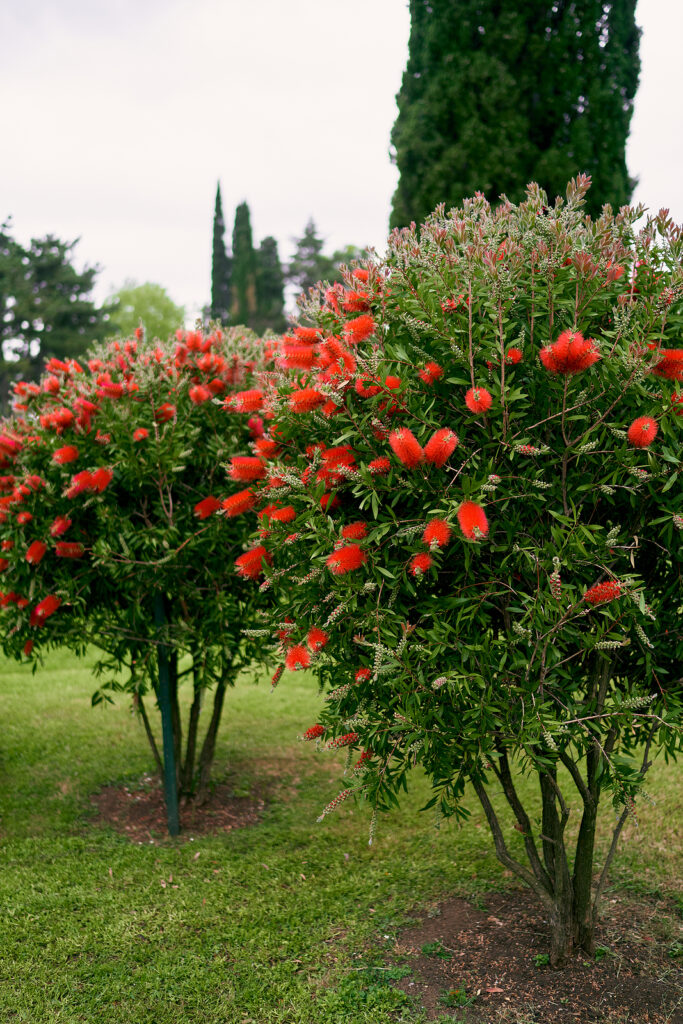
Callistemon care
- Callistemon can be pruned hard when young as hedges or espaliers. Callistemon can be prune and shaped as a small tree.
- As tree, Callistemon needs staking, thinning of surplus branches to prevent tangled, top-heavy growth.
Callistemon pests and diseases
- Callistem can be attacked by spider mites, thornbugs, and scale insects.
- Fungal stem galls and cankers, witches’ broom, and leaf spots can occur.
Callistemon propagation
- Sow seeds in spring or root semiripe cuttings in late summer.
- Surface sow seeds in warm soil in spring.
Callistemon varieties to grow
- Callistemon citrinus (C. lanceolatus). Lemon bottlebrush. This is the most commonly grown bottlebrush; it grows quickly to 10 to 15 feet tall and wide and can grow as high as 25 feet. It is tolerant of heat, cold, and poor soils. Nurseries offer it as shrub, espalier, or tree. It has narrow, 3-inc.-long leaves coppery when new, vivid green at maturity. Bruised leaves smell lemony. Bright red, 6-inch-long stamens attract hummingbirds. Cultivars include: ‘Jeffers’ that grows 6 to 8 feet tall and rounded form 3 feet tall and wide, with brilliant red flowers that redbloom throughout the year. Zones 8 to 11. ‘Compacta’ makes a 4-foot mound with smaller spikes. ‘Violaceus’ (‘Jeffersii’), is about 6 feet tall and 4 feet wide, has stiffer branching; narrower, shorter leaves; and reddish-purple flowers fading to lavender. ‘Mauve Mist’ has the same flower color but grows taller to 10 feet tall
- C. rigidus. Stiff bottlebrush. Erect, sparse, rigid shrub or small tree to 20 feet tall and 10 feet wide. Sharp, pointed leaves are gray-green (sometimes purplish). Red flower brushes 2 ½-4 ½ inches long, spring and summer. Seed capsules prominent.
- C. salignus. White bottle-brush. Shrub species grows 15 to 20 feet tall; sometimes trained as a tree. New leaves are nearly magenta. The flowers are cream-colored to pale yellow.
- C. viminalis. Weeping bottlebrush. Shrub or small tree with pendulous branches. Fast-growing to 20 to 30 feet tall and 15 feet wide. Narrow, light green leaves grow to 6 inches long. Bright red brushes appear from late spring into summer, after there is scattered bloom throughout year. Leaves tend to grow only at ends of long, hanging branches. Cultivars include: ‘Little John’ a superior dwarf form, grow to 3 feet tall and wide, with dense growth pattern and blood-red flowers in fall, winter, and spring. ‘Captain Cook’ is a dense, rounded form to 6 feet tall, suitable for border, low hedge, or screen. ‘McCaskillii’ grows to 20 feet tall, is denser than others, and better in flower color and form.

